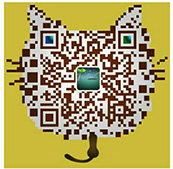 课程大纲:
课程大纲: TensorFlow卷积神经网络培训
Exploring a Larger DatasetIn the first course in this specialization,
you had an introduction to TensorFlow, and how,
with its high level APIs you could do basic image classification,
an you learned a little bit about Convolutional Neural Networks (ConvNets).
In this course you'll go deeper into using ConvNets will real-world data,
and learn about techniques that you can use to improve your ConvNet performance,
particularly when doing image classification!In Week 1, this week,
you'll get started by looking at a much larger dataset than you've been using thus far:
The Cats and Dogs dataset which had been a Kaggle Challenge in image classification!
Augmentation: A technique to avoid overfittingYou've heard the term overfitting a number of times to this point.
Overfitting is simply the concept of being over specialized in training -- namely
that your model is very good at classifying what it is trained for, but not so good at classifying things
that it hasn't seen. In order to generalize your model more effectively,
you will of course need a greater breadth of samples to train it on.
That's not always possible, but a nice potential shortcut to this is Image Augmentation,
where you tweak the training set to potentially increase the diversity of subjects it covers.
You'll learn all about that this week!Transfer LearningBuilding models for yourself is great,
and can be very powerful. But, as you've seen,
you can be limited by the data you have on hand.
Not everybody has access to massive datasets or the compute power that's needed
to train them effectively.
Transfer learning can help solve this -- where people with models trained on large datasets train them,
so that you can either use them directly, or,
you can use the features that they have learned and apply them to your scenario.
This is Transfer learning, and you'll look into that this week!Multiclass
ClassificationsYou've come a long way, Congratulations!
One more thing to do before we move off
of ConvNets to the next module, and that's to go beyond binary classification.
Each of the examples you've done so far involved classifying one thing or another -- horse or human,
cat or dog. When moving beyond binary into Categorical classification there
are some coding considerations you need to take into account. You'll look at them this week!





